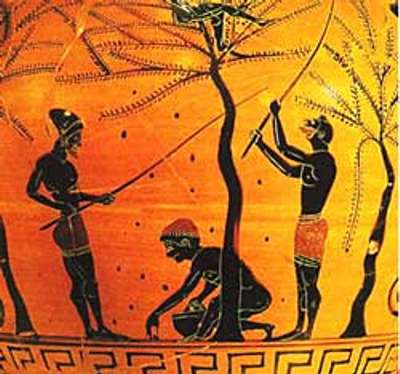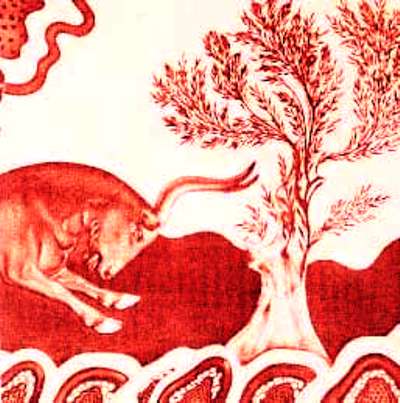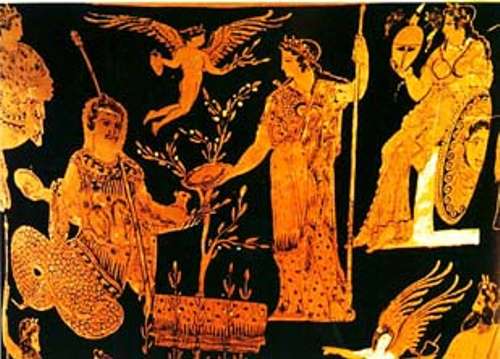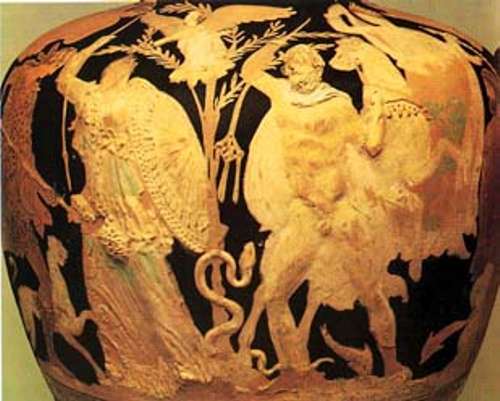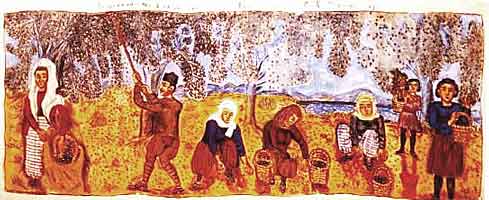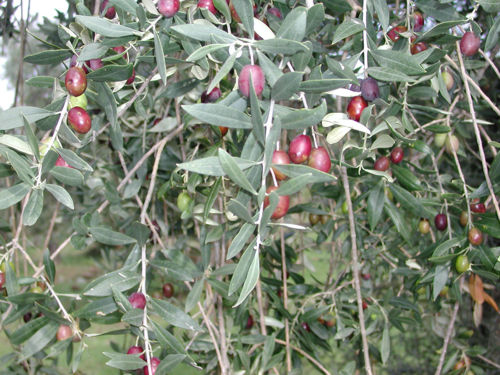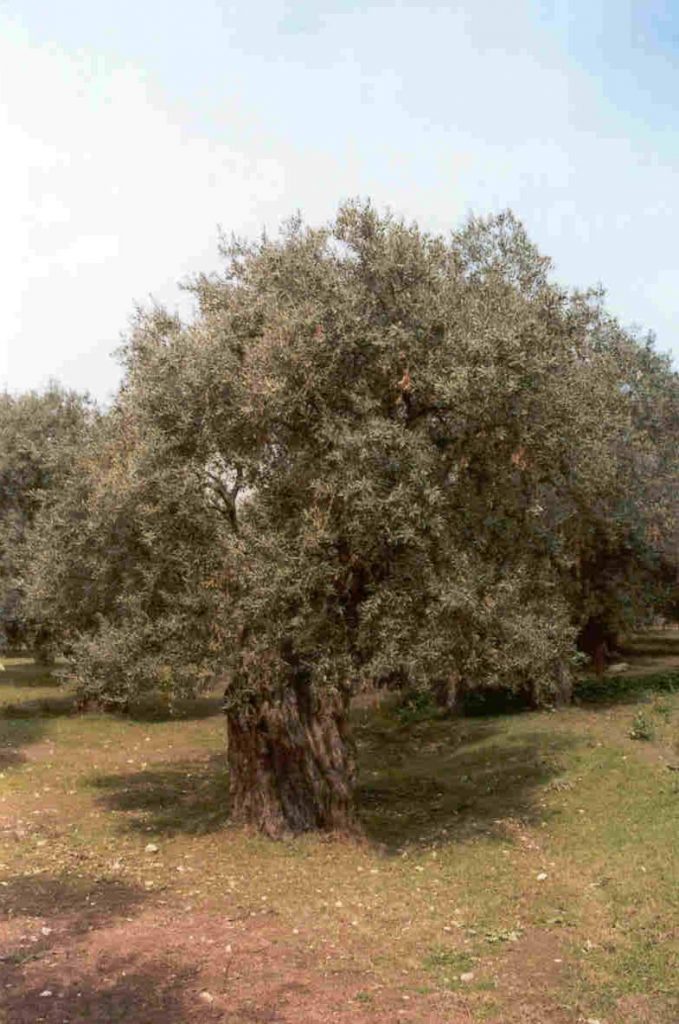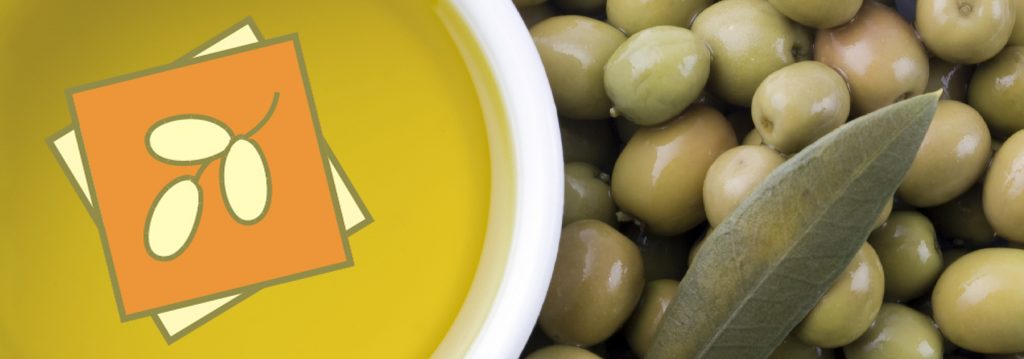The olive tree first appeared thousands of years ago in the Mediterranean Basin, and from there it spread to all neighbouring countries.
It is believed that ever since the Neolithic Age, collection of both edible and wild olives (Olea europaea oleaster) were practiced in the Aegean area. The oldest samples of olive pollen found so far can be dated to the end of the Neolithic Age and they come from Crete and Boiotia.
50000 years old fossilized leaves of the European Olive Tree were discovered on Nisyros, Cyme and Santorini.
According to Ancient Greek Mythology, the olive tree was a present of goddess Athena to the city of Athens, when a competition between her and god Poseidon took place in order to decide the patron deity of the city. When the competition started, god Poseidon struck the sacred rock of the Acropolis hill with his trident causing a spring of salty water to emerge. This spring was known as the Sea of Erechtheus. Athena, with her turn, struck the rock and an olive tree full of olive fruits sprang, which was regarded as a promise of glory and prosperity for the city.
Τα αρχαιότερα δείγματα συστηματικής ελαιοκαλλιέργειας και παραγωγής λαδιού προέρχονται από την Ανατολική Μεσόγειο και μάλιστα από την Παλαιστίνη.
The stone presses, which were discovered at the area of Haifa in Israel and can be dated to the 5th millennium BC, are related to olive oil production.
In all likelihood, the Phoenicians were the first to distribute the olive tree cultivation to the Mediterranean Basin and also the first to produce olive oil by using the same technique as the Egyptians who extracted oil out of seeds.
The clay tablets found in the Mycenaean palaces of Crete and mainland Greece provide us with information about olive tree cultivation, and olive oil production and distribution. These tablets are written in the first Greek writing, which is a syllabic script conventionally named Linear B.
Η ελιά από αρχαιοτάτων χρόνων εμφανίζεται στους μύθους, στις παραστάσεις και στην ιστορία των λαών στις χώρες που φύεται. Αποτελούσε ανέκαθεν σύμβολο ευημερίας, ειρήνης, γονιμότητας και ευφορίας. Για να καταλάβουμε την κοινωνική σημασία της πρέπει να θυμηθούμε ότι στην αρχαία Ελλάδα οι νικητές των Ολυμπιακών αγώνων στέφονταν με ένα στεφάνι ελιάς και έπαιρναν σαν δώρο ελαιόλαδο.
From an early period, the Greek nation was associated with the olive tree and olive oil. They were both connected with many aspects of life and they were a part of the Greek social, economic and artistic expression. Soon, the Greeks started more and more techniques of usage, and they discovered both the therapeutic and cosmetic properties of olive oil. It is still used even today in many beauty products.
The olive tree is considered a blessed tree and every part of it can be exploited. Today, apart from its fruit, wood and leaves, the olive processing waste can be also used in industry.

